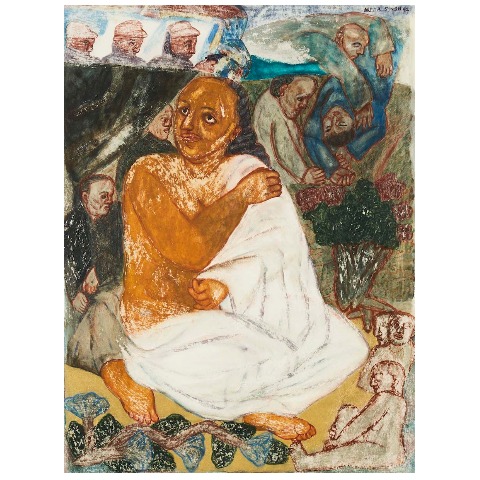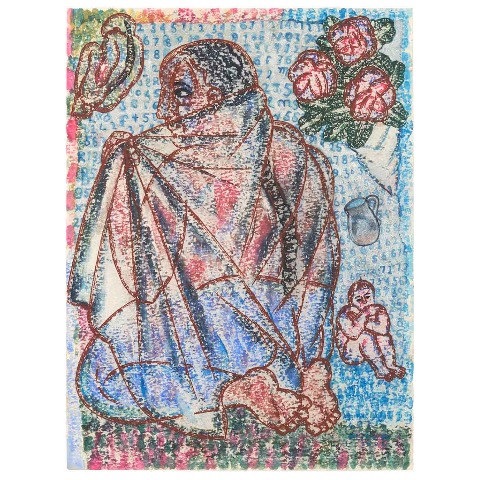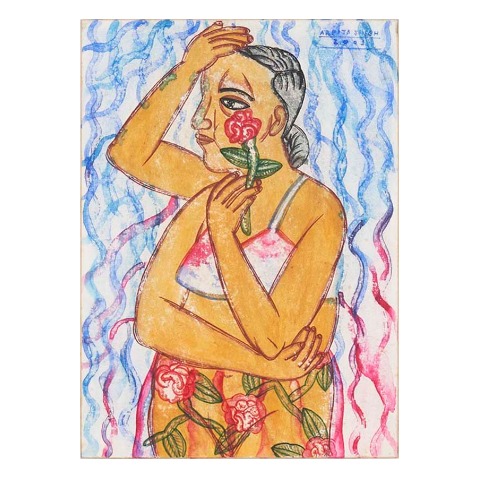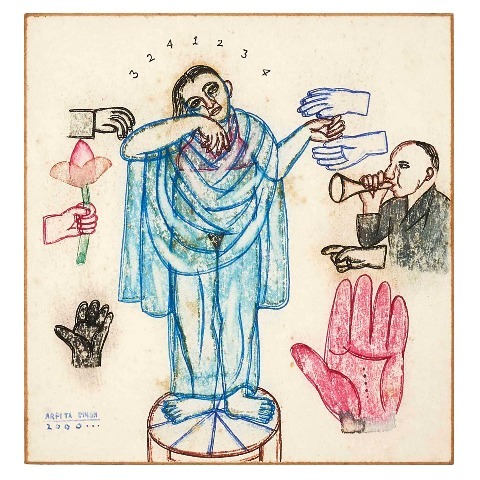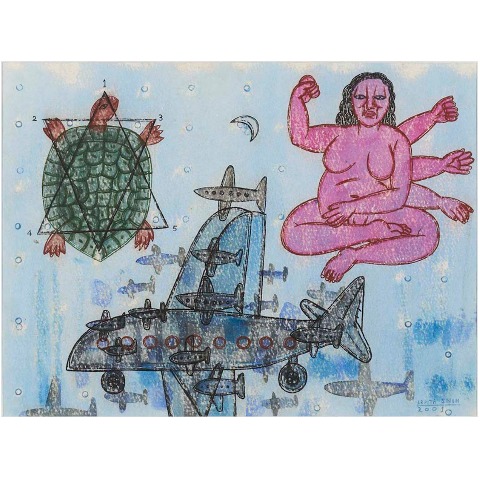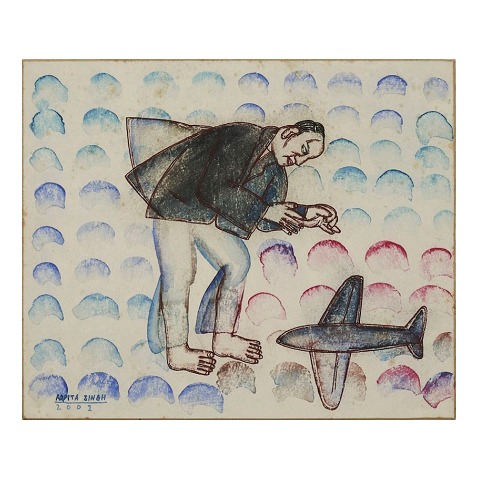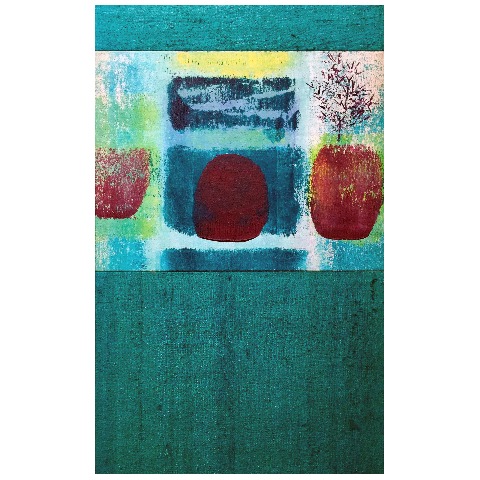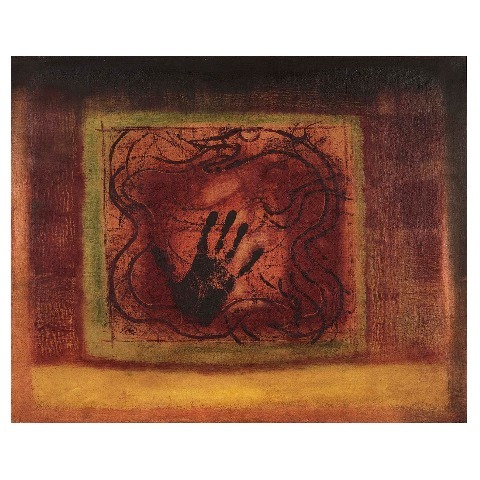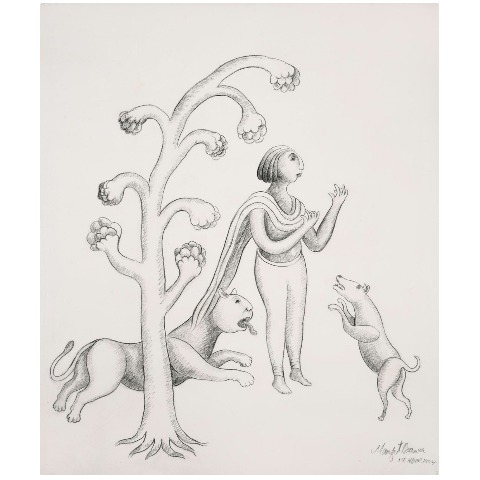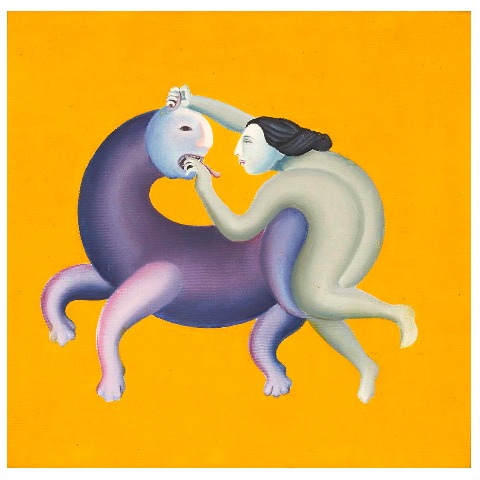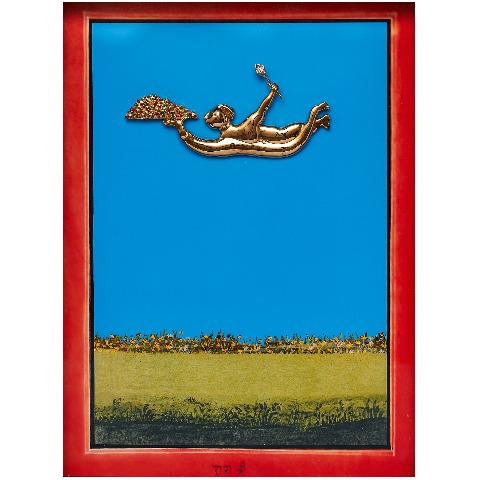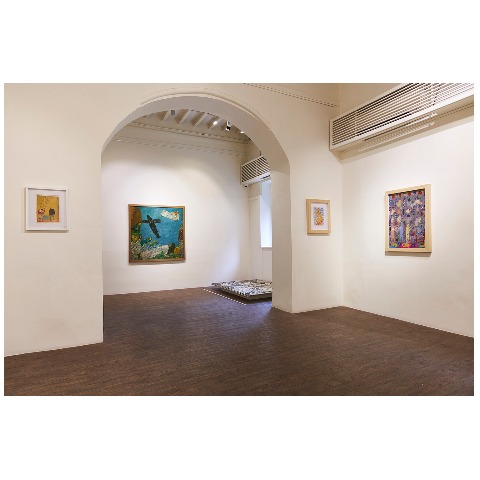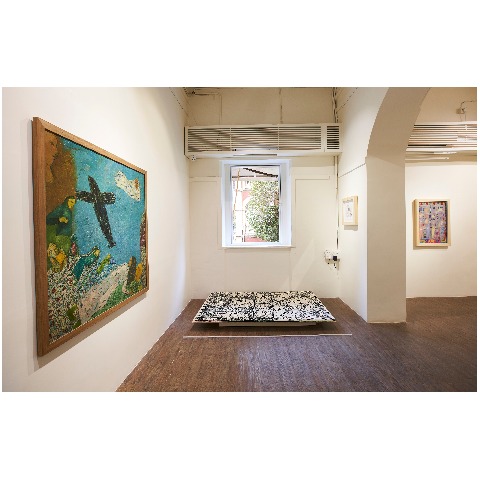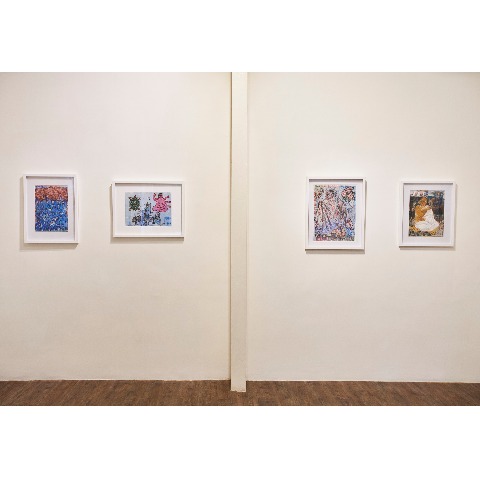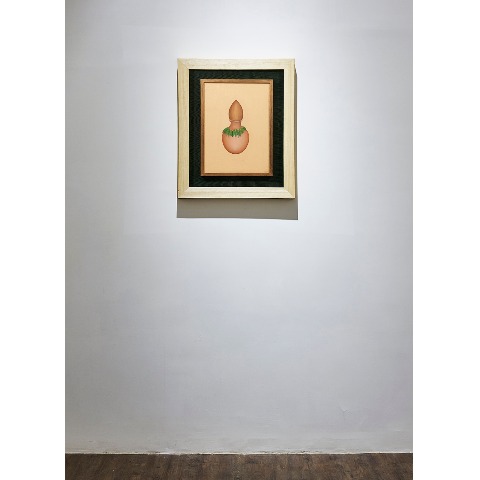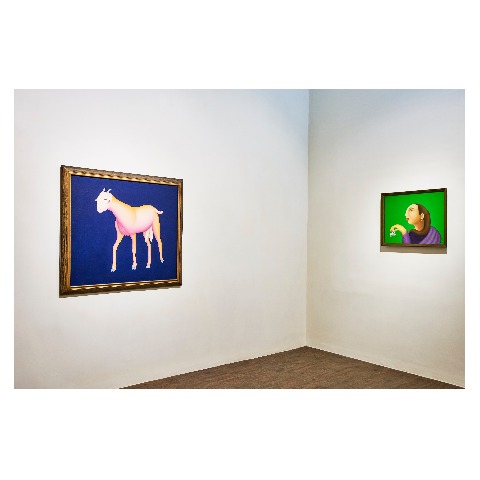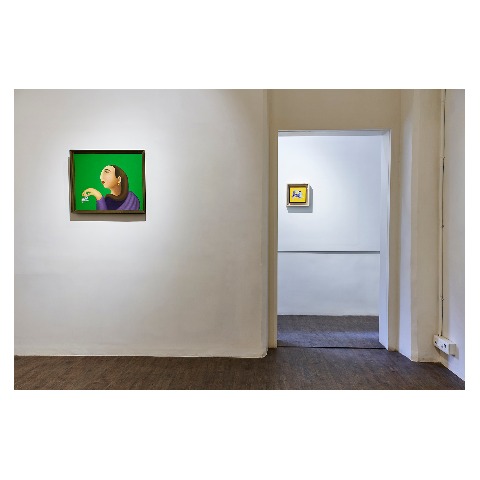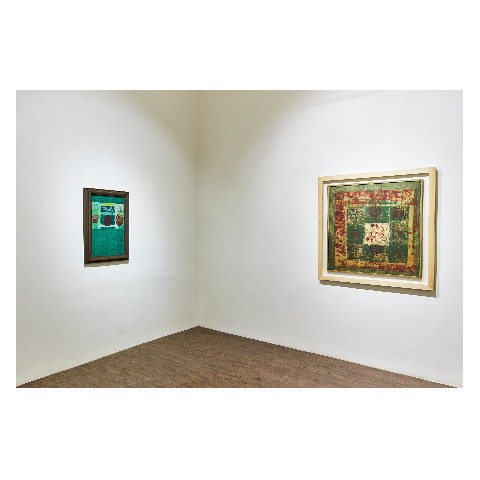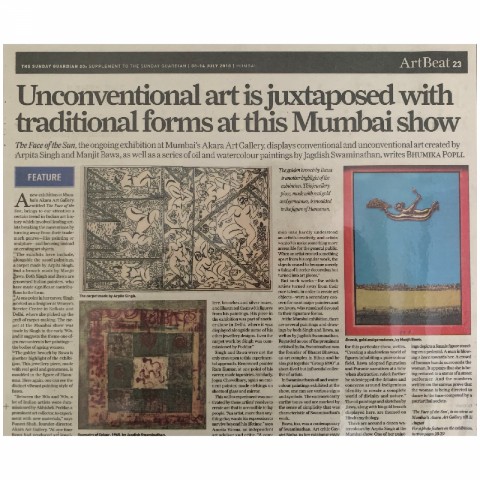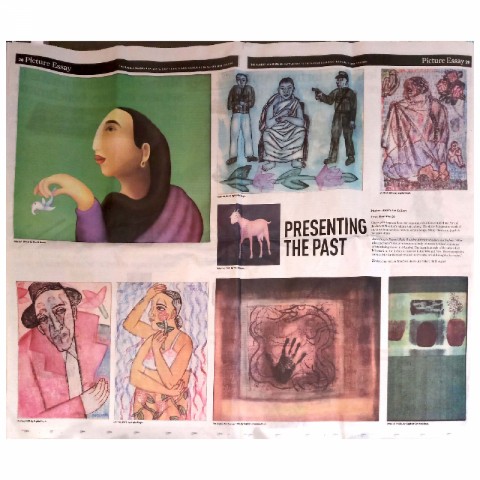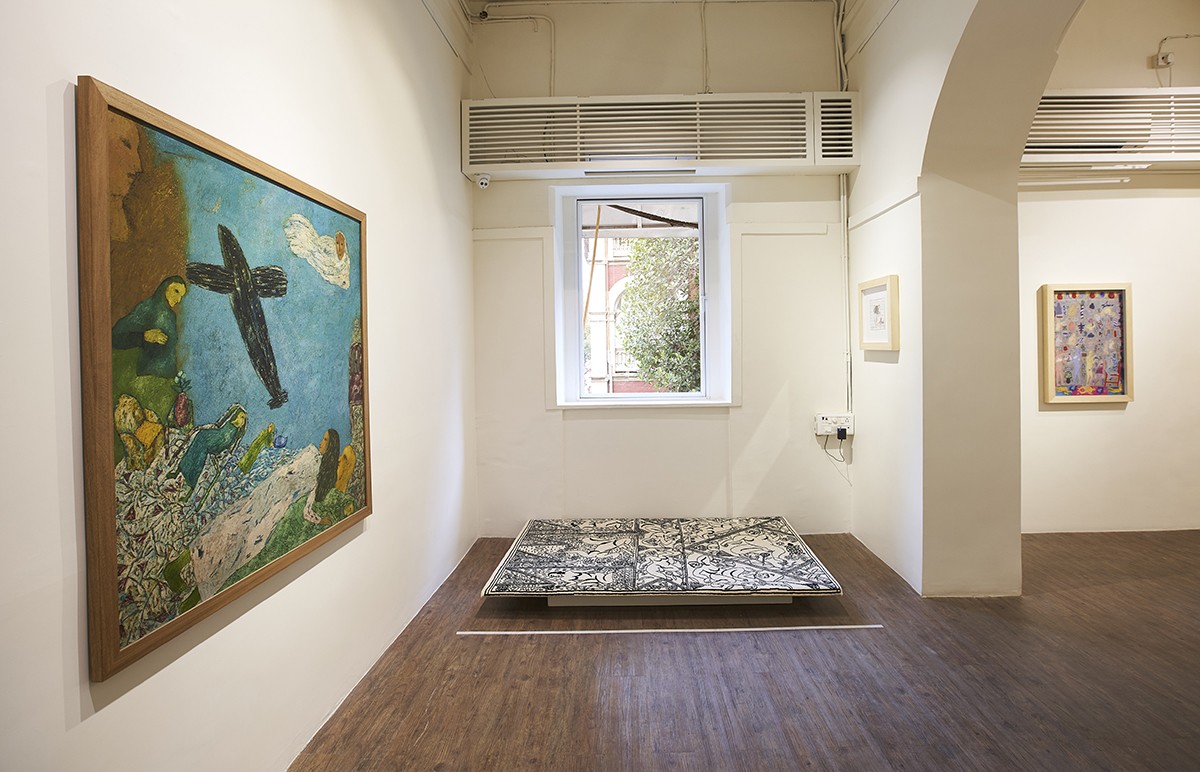
THE FACE OF THE SUN
July 06 - August 31 , 2018
“The face of art is somewhat like that of the sun. It does not communicate but gives.” - Jagdish SwaminathanIn Delhi during the 1970s and 80s, with Garhi studios as a hub, Jagdish Swaminathan had come to occupy a singular place, as artist and ideologue. Seeking the ‘numen’ and a poetic mysticism in art, he spearheaded the Roopankar museum in Bhopal, the first cultural site to engage art that was folk, tribal and ‘urban’. In his own practice Swaminathan revitalized ancient signs and symbols, drawings with equal fervour from the yantra, the Brahminical logos and vernacular ritual references. Like the face of the sun this was a generous incursion into the possibilities for abstract art, as much as for discursive thought on identity.
Almost simultaneously, two other streams of engagement came underway: a close friend and associate of Swaminathan’s, Manjit Bawa reengaged another aspect of Indian tradition. In a hundred year span, after Ravi Varma and MF Husain, Manjit Bawa became the third artist to attempt a reimaging of the gods, creating in a shadowless world a contemporary vision of the pastoral, somewhat less grandiose vision of divinity.
Arpita Singh, located firmly within the capital city, its unchecked sprawl and political complexity arrived at a graded language of irony and critique. The feminine subject, from the young girl to the middle aged figure of the woman in domestic interiors, occasionally alternating as the exhausted Devi in the market place, appeared as the unlikely protagonist in her work. A perceptible level of threat in public spaces, a scrambling of suggestions of value and hierarchy, use of the Mughal hashiya and a sophisticated language of abstraction embedded in her drawing and painting have contributed to her work an enduring commentary on our times.
